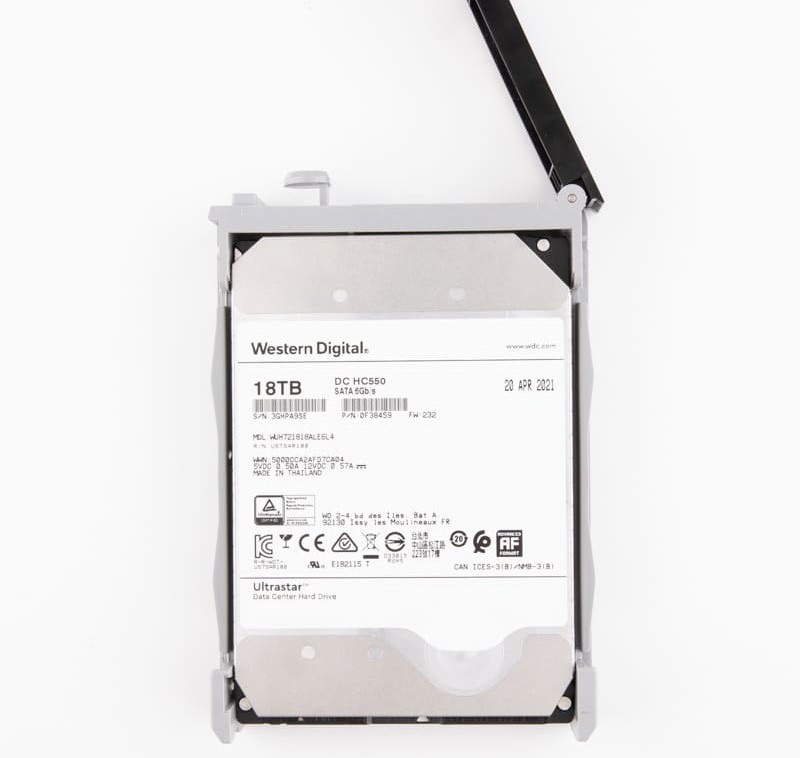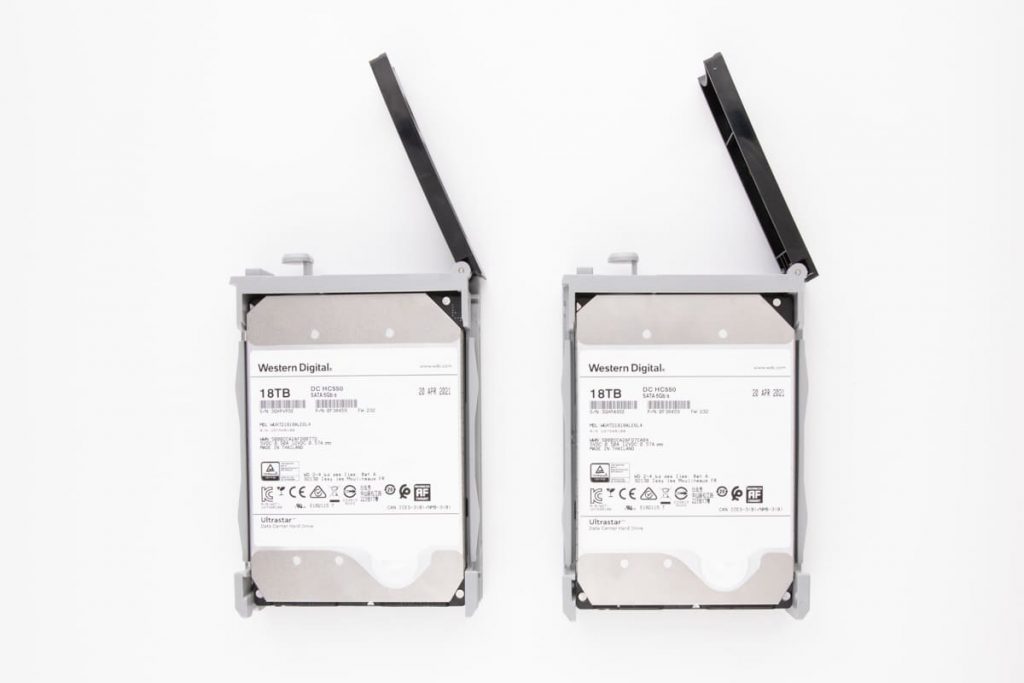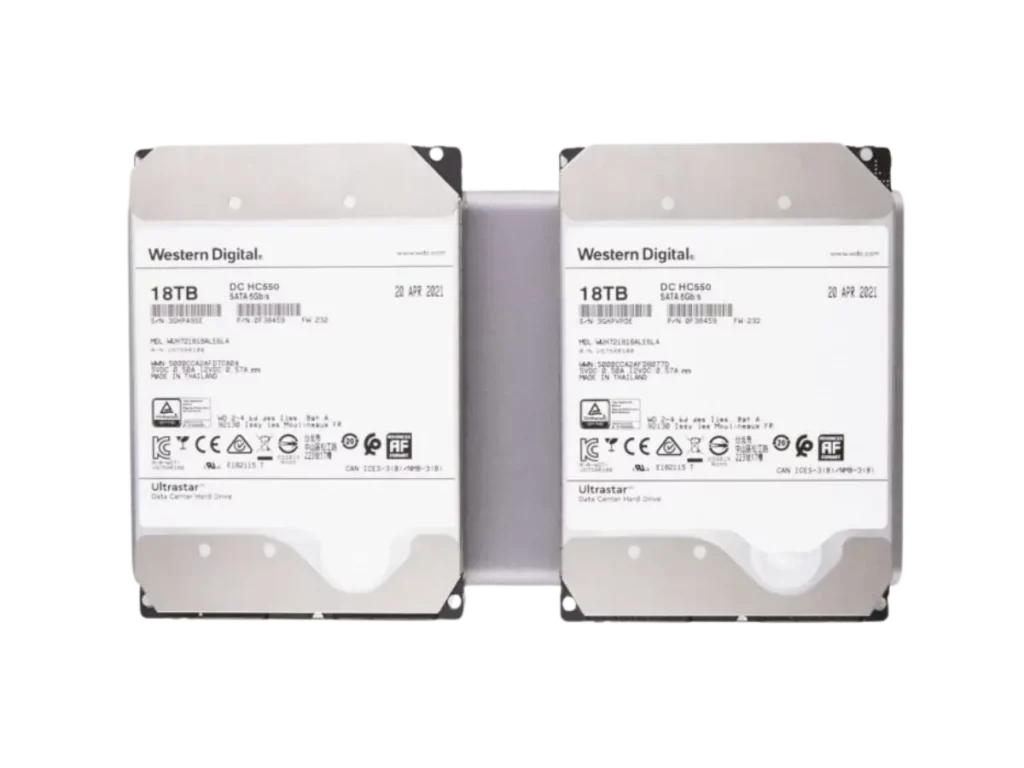The network-attached storage device is designed to be integrated into the local network at home or an office and provides access to saved files from any gadget. Several combined elements operating in RAID mode make it possible to avoid information loss even in cases where one of the hard drives fails.
The standard minimum, sufficient for use, is two hard drives – this is enough for a collection of large volumes of media, even considering that part of the disk space will be occupied. Depending on the number of HDDs, the array creation software will automatically suggest available options and select the optimal mode of operation.
Setting up NAS storage involves hosting data on a separate server to which disk media is connected locally. For other devices on the network, information is presented in the form of files, the transfer of which is carried out through high-level application-type protocols such as SFTP, HTTP, WebDAV, DC, BitTorrent, etc.
NAS WD Hard Disk Drive Failure
Recently, we received a network-attached storage data recovery request. The NAS device was running on 2 Western Digital hard disk drives, assembled in RAID 0. One of the hard disk drives failed, and the data was lost as RAID 0 works without redundancy. Then, the customer purchased a new hard drive to replace it and potentially retrieve their files using data recovery software.

They rushed with the replacement and started restoring the array. The data recovery software could not access the first HDD and corrupted the second hard disk drive.
After searching for a reliable data recovery company, the customer decided to entrust his device to Raid Recovery Services.
Our dedicated customer service representative guided the client through our recovery options, and he decided to request an expedited evaluation.
The process of expedited assessment usually takes 8 hours to complete. Our data recovery team received the hard drives and started diagnostics right away. They tried to access the hard drives’ data, but the first HDD had spindle motor failure, and the data on the second hard drive was corrupted.
Western Digital HDD Spindle Motor Data Recovery
The wedge of the bearing is often complicated by the fact that the control board chip of the spindle motor, trying to spin the motor, experiences increased loads, heats up more, and often burns out. Replacing the electronic board with a serviceable one, in this case, could lead to the fact that another microcircuit would burn out.
Spindle motor recovery requires a donor disk to transfer magnetic platters from the failed hard drive.
The process is complex and requires special equipment for the subsequent centering of the plates since any micro-displacement along the axis can lead to the fact that the heads cannot be positioned correctly according to the servo markings.
All the described processes are carried out in an ISO Certified Class 10 Cleanroom.

A clean room is a complex structure, equipment, and organizational and technical measures that provide in the atmosphere of a limited working space a strictly defined concentration of suspended particles of specific sizes, including microorganisms, which is determined by counting units of these particles per volume unit.
Having years of experience and a cutting-edge data recovery lab equipped with advanced data recovery tools, our technician successfully transferred all the magnetic platters and centered them according to the western digital hard drive servo markings. The next step was to fix the corrupted hard drive to assemble both HDDs back in RAID 0.
Network-Attached Storage BtrFS Recovery
During diagnostics, the data recovery expert found the BtrFS file system on the disks. Like in other file systems, all data was stored on a disk at specific addresses. These addresses are stored in metadata which was organized as b-trees. Based on the analysis results, he estimated the necessary parameters for the operation of the array, the block size, and the type of block interleaving.

Then the engineer performed a virtual reconstruction of the array and got a tree of directories of files and folders. The data was checked for the integrity and correctness of the assembly and set to save the data. The recovery result was 100%.
The customer reviewed and approved the results through a remote file verification session. He received his data via a secure cloud storage link as his data did not exceed 20GB.
Contact RAID Recovery Services at 866.990.8999, or submit your case by filling in this form to start your data recovery case.
We have the most extensive inventory of SCSI, SAS, and Fiber Channel NAS server hard drives. File recovery of RAID arrays is performed around the clock. Assembly works are carried out exclusively with sector-by-sector copies of hard drives, which eliminates the possibility of storage systems data loss. Our engineers will help you recover your lost data in the required timeframe.
Frequently Asked Questions
Can data lost from a NAS failure be recovered?
Yes, in many cases, data lost due to NAS failure can be recovered using specialized data recovery tools and services. The success of data recovery depends on the extent of the damage and the timely initiation of the recovery process.
What should I do immediately after a NAS failure to protect my data?
After detecting a NAS failure, stop writing data to the drives. Properly shut down the device to avoid more data loss, and seek help from a professional data recovery service.
How can I prevent data loss from NAS failure in the future?
To prevent future data loss, ensure your NAS is set up with RAID to provide data redundancy. Also, regularly back up your data to multiple locations, keep your NAS system’s firmware updated, and monitor the health of your NAS drives.
How long does the NAS data recovery process take?
The duration of the NAS data recovery process can vary widely based on the extent of the damage, the size of the data, and the specific configurations of the NAS system. It can range from a few days to several weeks.